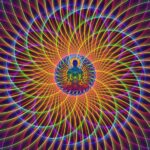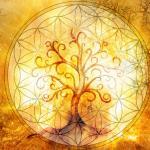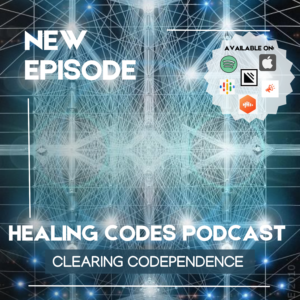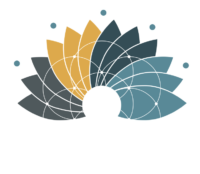

In this week’s blog, Clearing Co-dependence, I’ll cover ways to identify co-dependent patterns, how they become established and how to treat them using the complementary medicine approach of Consciousness Medicine.
Codependence is an unhealthy relationship dynamic that results in people becoming excessively reliant on others for their health, happiness and well-being. Codependent patterns are established in childhood and perpetuated throughout a lifetime with partners, friends, and communities. Some people live their entire lives in this kind of dynamic. And the longer you experience it the more tightly in winds around your heart and soul, making it difficult to break. Ok, so that’s the bad news.
The good news is that conscious awareness and whole-person healing treatment approaches can identify and clear the factors that underly codependence. Treating codependence from the physical, emotional, energetic, ancestral and spiritual perspectives across the body matrix, is the key to facilitating deep and lasting change. This allows for the healing and transformation needed to manifest healthy connections based on trust, equanimity and unconditional love.
Codependence is a complex concept used worldwide by mental health professionals to inform their practices. It emerged in the 1940s in the context of treatment for alcoholism in the US and has since spread to all corners of the globe. It was a term used as an illness for those close to alcoholics if their actions and behaviours were enabling the addict.
Co-dependence is a chameleon concept, as it takes many forms, and is now applied beyond addiction to other kinds of dysfunctional relationships. General characteristics of codependents are that they are busy taking care of others and forget to take care of themselves, resulting in a disturbance of identity development. Codependents with often have a lack of genuine and honest communication, Self-worth is tied to others’ approval, obsessive need for external validation, low self-esteem, lack of healthy boundaries, separation anxiety, inability to say no, difficulty identifying needs and feelings, easily lost in other’s problems, putting the needs of others before ones own, sacrificing self-care and a lack of clear sense of self.


For example, codependence is passed down through the generations from an ancestral and emotional body perspective. Ancestral entanglements and limiting beliefs about relationships are unconsciously passed between parents and children and must be revised into empowering beliefs in order to break free from codependent tendencies.
From the emotional body perspective, releasing fear and installing safety is key to uncoupling codependence. The energy body plays a huge part in perpetuating codependence, and working to heal and restore the boundaries of the chakras, auric layers and the central channel is required to release it. From the physical body perspective changing behaviours and creating healthy independence in relationships is essential to freeing oneself from feeling trapped by codependence. From here, this allows for the pure life force energies of the spiritual body to be connected fully, allowing for a deep knowledge of the inner truth and essence of being that breaks the ties of codependency permanently.
If your parents had a codependent relationship, then the odds are high that you will create that too. The reason for this is that core beliefs about relationships are established early in life and are mirrored by your parent’s behaviours, beliefs and how they relate to you. Children code their core beliefs about themselves and the world through observation of their parents and participation in the expression of their family dynamics. Limiting beliefs that keep co-dependent patterns in place must be revised to empowering beliefs in order to fully break free from the hold codependence can have.
Take a moment to reflect on what was your parent’s relationship dynamic when you were young. What were your mother’s beliefs about relationships? What about your father’s? These will give you an indication of the foundation of your own core beliefs to identify if any limiting beliefs need to be revised.
Examples of limiting beliefs associated with codependence are:
- I must be needed to be loved.
- Others needs are more important than mine.
- I can only be happy when others are happy.
- I am not strong enough to take care of myself.
- In order to be safe and loved I must give to others before myself.
Empowering beliefs associated with healthy non-codependent relationships are:
- My relationships are based on mutual truth and understanding.
- I value myself and others in equanimity.
- Setting healthy boundaries with myself and others will allow me to relate with others in a healthy, meaningful way.
- I hold my personal power and allow others to hold theirs too.
- It is safe to relate authentically in relationships.
Co-dependence diminishes the ability to relate with unconditional love. Instead, the exchange of love becomes conditional on expectations, assumptions and projections. How your parents defined and expressed their love helps to understand if their love was conditional or unconditional.
When parents become co-dependent on their children then unconditional love and support are not available there either. Parents who are not happy within themselves will become co-dependent on their children if they are the only source of happiness in their lives. Take a moment to reflect on how love was expressed between your parents, to you by your parents and within your family. When dysfunction is present love will be expressed through anger, criticism and expectations. It will become conditional on those expectations being met.


Co-dependence in relationships is disempowering as it disrupts the connection we have with our own inner truth authenticity and integrity. This feeds into the pattern of low self-esteem that underlies codependency, where one’s worth is conditional on someone else’s approval or attention. External validation is something we all seek, as it is wired into our human psyche. It stems from a safety pattern as children, that when the external world is safe, supportive and loving then we can know we are safe. This also builds a strong sense of trust in self for the child.
However, when the sense of safety, love and support is not included with unconditional love the reliance on external validation becomes essential to know both who we are and if we are safe. We then build an attachment to these external factors that must be let go of in order to break the cycle of codependency. This allows us to find the personal empowerment needed to raise the levels of self-esteem and safety to connect more deeply and fully with our inner knowing and truth.
Releasing judgment and attachment are two success factors in clearing codependence. Letting go can be one of the hardest things to do, and can be impossible when co-dependent tendencies are present. Yet we cannot create anything new until we let go of what no longer serves us. Attachment breeds judgement. And judgement requires external validation which is a slippery slope back into codependence. When our self-love tanks are full, and we know our needs and how to get them met it is easier to release attachments.


Non-judgement helps to solidify the release of attachment to external validation. When we no longer seek whether we are good or bad, right or wrong then we can rely on our internal compass of integrity and authenticity to guide our actions, behaviors and life choices.
Being authentic with the self is supported by being in touch with personal needs. Marshall Rosenberg who wrote NVC non-violent communication, which is required reading for all of my courses, show us how unmet needs can lead to heightened emotions and conflict. Being present enough to identify what our need is at that moment allows for the de-escalation of emotions and a solution-focused approach to conflict resolution to become available. A codependent will delete their needs and replace the need of others as their priority. Understanding one’s own needs, and ways they can be met by a combination of self and others is the key to releasing codependence permanently.
So now let me bring you through an example of how to work with codependence across the body matrix, in the order I would work with them. Now I’ll take you through an example of what to work across the body matrix for treating codependence.


In healthy relationships, the crown and root belong to us, ties to the pure frequency of the divine energies of the crown and the solid grounding energies of the earth through our root.
We then can intermingle our remaining chakras with others to create a healthy energetic dynamic that allows for us to remain connected to our own truth, needs and sense of self. This allows for a healthy dynamic where the sum is greater than the individual parts in the relationship and we can inspire and be inspired by the people in our lives to be the best version of ourselves.
When the root and crown are joined, however, it limits the ability for each individual to reach their full potential, since this unhealthy joining of root and crown limits both people’s growth.
It is like 2 trees that grow too close to each other. The roots will compete for the same nutrients and the branches will be hindered from growing fully which also limits the amount of nutrients available. Eventually, one or both trees will die due to a lack of life-giving nourishment. But when the trees are distanced in a way that allows for sufficient & balanced root and branch growth, each tree can thrive while intermingling with the other trees as a family. Nature is a great teacher for these patterns as we can observe tree rings in old-growth forests where the trees are related, but separate in a symbiotic way that helps grow the entire forest.
Healing the energy body involves clearing and activating the root and crown chakras for each individual. We also must do the same for the solar plexus chakra to be able to set healthy boundaries is also essential for breaking the pattern of co-dependence. The ages in development associated with the root are 0-5, solar plexus 8-12 years and the crown 26-30so we must also address anything significant or traumatic that happened at those ages, as they will result in misformed energy centres.
From the physical perspective, codependence can show up as people being joined at the hip, unable to be separated for any period of time, difficulty in making decisions without the other person, lack of genuine and honest communication, and cancelling plans with others to be with the person where the co-dependent tendencies are attached.


Once we have the energy body repaired and balanced and have created the potential for healthy independence in actions, behaviours and lifestyle we will be invited to face the deeper emotions that keep codependence in place. Since codependence is a safety pattern, we must be able to compassionately confront our deepest fears to access a deeper place of foundational safety within ourselves.
Codependent relationships become difficult to break because of the tight-knit bond created that feels like a soul mate connection. If that relationship ends, extreme emotional distress such as panic attacks, depression, suicidal tendencies, and more will arise. Sometimes the codependent will fear having to feel this level of distress and will stay in the relationship solely to avoid them. This stems from a feeling that one can’t go on without the person they are codependent with because the whole world was built on and revolves around them. To
Feeling the emotions, while not getting lost in them is needed to move through the fear of not being able to survive without them. Looking at ages in development where the trauma happened, core beliefs were established and are associated with the formation of key energy centres needed to treat the emotional body to break free from codependency.
Childhood trauma has been linked to codependence tendencies, and if this is present should be worked with a skilled therapist who can hold the space to allow the client to survive feeling these emotions and give them consistent support to move through into a new way of being. Since codependency is a pattern that can easily be transferred to another person, both client and therapist should be aware to hold good boundaries so that the co-dependent tendencies do not find a new home in the professional relationship.


In particular, codependence is a form of the Victim | Perpetrator | Rescuer pattern. By definition, the rescuer will help others at the cost of themselves. They put the needs of others before theirs, feel self-care is selfish, easily lose themselves in others’ dramas, feel they can’t say no, feel more comfortable taking care of others rather than themselves, and can only be happy when others are happy. These are all signs of codependence. Bringing balance to all of these aspects within, while standing in one’s appropriate place intergenerationally allows for the hold of these ancestral entanglements to be lifted and healthy relationship dynamics to emerge.
From the ancestral perspective, if unhealthy relationship dynamics are present I will also look at any previous relationships the parents or client had and work the orders of love to include each of these consciously. If they are not included fully then they will replay through out members of the family system. Especially relationships that were secret, forbidden, ended by death, resulted in a child or included violence.


If you or someone you know has been touched by codependence, I hope this information is useful to know that it is possible to be clear from codependence and create loving and healthy relationships based on equanimity and mutual respect.
If you’d like to learn more about my consciousness medicine and family constellation offering that can help heal addiction, please visit my website, www.consciousness-medicine.com, for a full list of on-demand and in-person courses, healing and yoga retreats and 1:1 sessions.
_____________
Upcoming summer retreats, courses, workshops and 1:1 sessions.
Sign up for my e-newsletter and stay connected on social media with links on the homepage.


